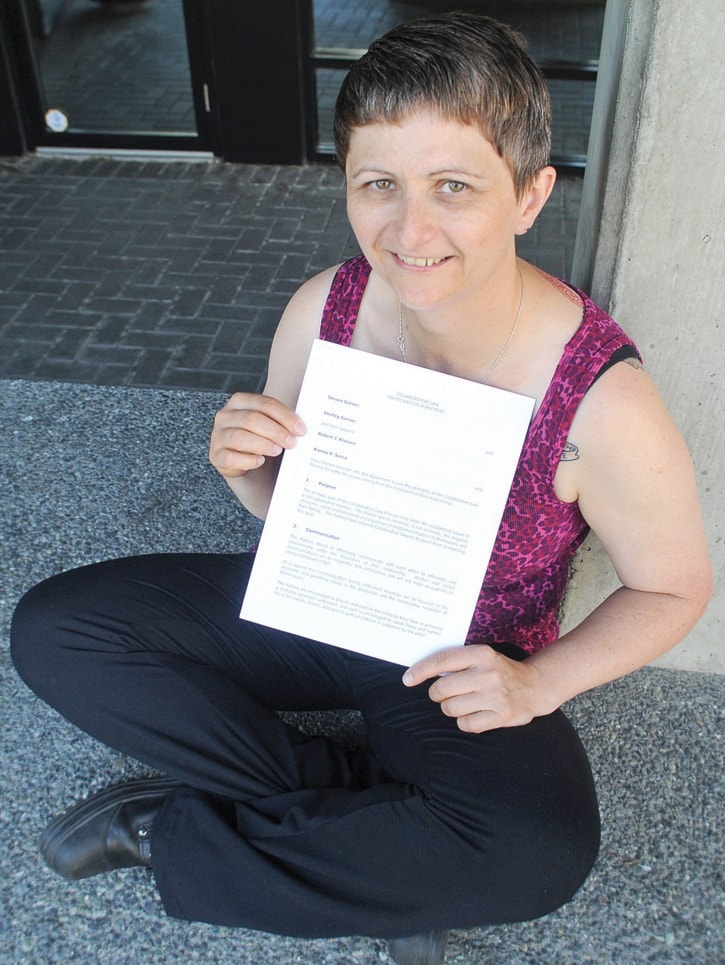Shelley Garner never expected to get divorced.
The 45-year-old Saanich woman’s husband asked for a separation in November 2007 after more than 20 years of marriage — and was pursuing a divorce.
When Garner’s husband suggested the idea of collaborative family law, a type of conflict resolution in which both participants agree not to go to court, she agreed.
“I didn’t hate him, but the marriage was over,” she said.
But Garner wasn’t emotionally prepared for the first four-way meeting, in which both participants talk in person about their goals for the collaborative process, helped along by their lawyers.
“The first meeting was very upsetting,” Garner said. “But once I got through it and had a sense of everything, it definitely got easier.”
Garner said the meetings, where she and her ex-husband talked about child custody, disclosed their finances and divided their assets, were hard.
“Divorce is not an easy thing. There’s still the notion of us versus them,” she said.
But she felt their eventual separation agreement was straightforward and fair. She got what she wanted. “For someone who was kind of stumbling along, the process laid out a way to support both of us.”
Garner felt supported by both her and her husband’s lawyers, and felt like they listened to her.
Collaborative family law is not a new type of divorce law. Minnesota family lawyer Stu Webb introduced it in the U.S. more than 20 years ago and it has since spread to Canada, Europe and Australia.
It is influencing law practice in a very real way.
The B.C. Family Law Act, which deals with child and spousal support and dividing assets in the case of divorce, has legally recognized collaborative law as a legitimate alternative to court.
Robert Klassen is a family lawyer who founded the Collaborative Family Law Group in Victoria in 2001.
He says the 50 lawyers, divorce coaches and financial and child specialists who belong to Greater Victoria’s law group work hard to advocate it as an option. But he is hopeful the amendment of the Family Law Act will further spread the word.
“Hopefully the government and other agencies will support the message.”
Klassen will also be leading the University of Victoria’s first course in collaborative law in January. He believes that for couples who want to legally end the marriage, the process makes divorce easier.
“The separation agreement gives them everything but the divorce. It’s a binding legal document that survives the divorce — when the divorce goes through, it’s undefended.”
It’s often cheaper and takes less time than court, he said, because there are fewer legal hurdles.
Garner said she paid less than $3,000, and that she only met eight times with the lawyers.
Klassen said it’s not for everyone: he’s currently dealing with one case where there is a big power imbalance between the couple.
“(We always have to look at whether) that is an appropriate case for a collaborative process — is there abuse or betrayal?”
But collaborative practices also retain divorce coaches to help clients through their emotions and financial advisors to inform them of their legal rights.
Garner said the listening skills she learned have helped her be more civil to her ex-husband.
“I think it helped in terms of communication skills. … We could have easily become emotional and adversarial.”
While she thinks it only works for couples that are willing to co-operate, she said it worked out for them very well. “That’s the whole point. It’s a win-win.”
For more information about collaborative law, go to www.colalborativefamilylawgroup.com.
editor@goldstreamgazette.com
